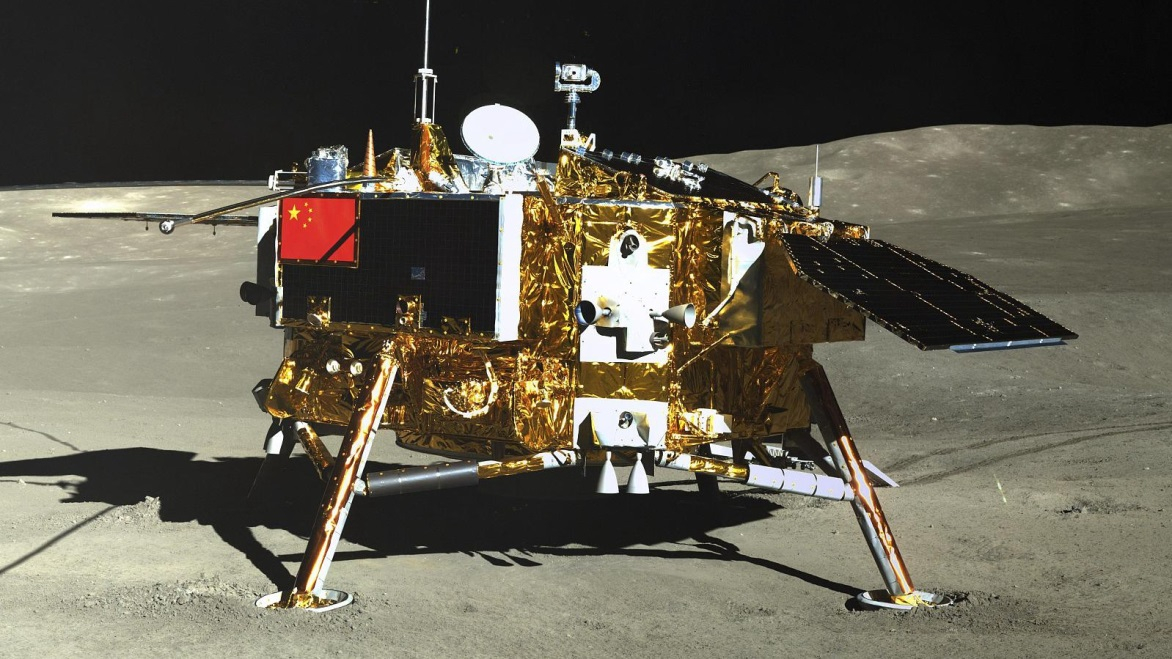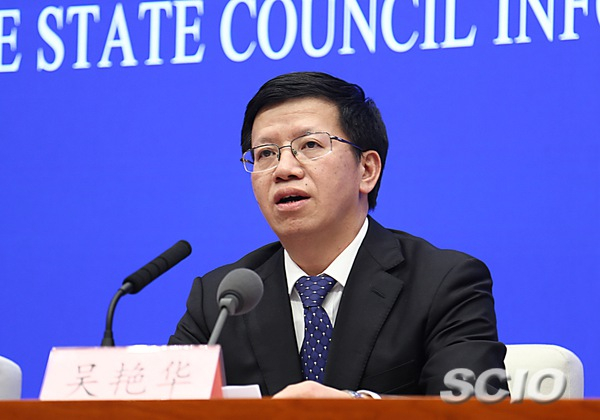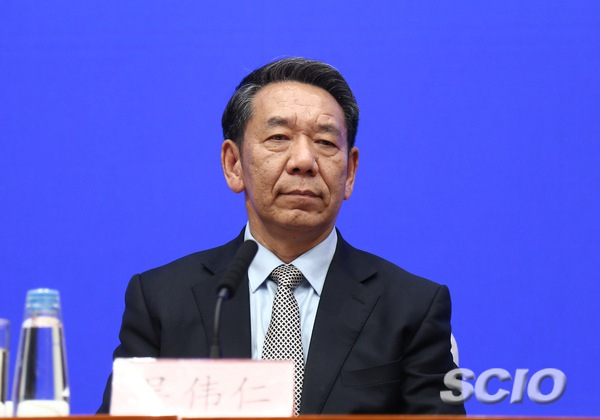
Space
15:33, 14-Jan-2019
China reveals Chang'e-4 lunar mission's next steps
Updated
14:24, 17-Jan-2019
By Liu Hui, Gao Yun

China's State Council Information Office (SCIO) held a press conference Monday on China's Chang'e-4 Lunar Exploration Program. The lunar probe successfully made the first-ever soft-landing on the far side of the Moon last week and sent some never-before-seen pictures of the dark side of the Moon.
The success of the Chang'e-4 mission fully raised the curtain of the China's lunar exploration program phase IV and deep space exploration program, Wu Yanhua, vice administrator of the China National Space Administration (CNSA) and deputy chief commander of China lunar exploration program, said during the press conference.

Wu Yanhua, vice administrator of CNSA and deputy chief commander of China lunar exploration program /SCIO Photo
Wu Yanhua, vice administrator of CNSA and deputy chief commander of China lunar exploration program /SCIO Photo
Named after Chinese moon goddess Chang'e, China's lunar exploration program, which began in 2004, includes orbiting and landing on the dark side of the Moon and bringing back samples to the Earth.
A pioneering and cooperative mission
Besides the first-ever soft-landing on the far side of the Moon, the mission has achieved many other firsts, including relay and telemetry, track and command between the far side of the Moon and the Earth, ultra-low frequency scientific exploration by the lander on the far side of the Moon and the lunar-orbiting micro-satellite, laser-ranging technology experiment beyond the Earth-Moon distance, biological science demonstration on the lunar surface, and international payloads cooperation and joint exploration.
The probe is equipped with 13 payloads, including four scientific payloads jointly developed by scientists from the Netherlands, Germany, Sweden, Saudi Arabia and China.
The station China built in Argentina has participated in the measurement and control task. Besides, China also cooperates with Russia and the U.S. to guarantee safe and sound operation of the probe.
China's Chang'e-4 mission "marks an incredible milestone in the history of space exploration; and this is not only a great success for China but also a key step of international space community," said Simonetta Di Pippo, director of the United Nations Office for Outer Space Affairs.
Chang'e-4 mission in scientific exploration stage
Three major aspects will be carried out by Chang'e-4 probe as the mission had transferred from commission phase to scientific exploration phase, said Wu Weiren, general designer of China's lunar exploration program.

Wu Weiren, general designer of China's lunar exploration program /SCIO Photo
Wu Weiren, general designer of China's lunar exploration program /SCIO Photo
First is the topography of the landing area. In the past, people used remote sensing to detect a general landform, while this time, with the rover Yutu-2's walking on the Moon, "we got the first geological profile of the far side of the Moon, and we can detect 100 to 200 meters deep part, the geologic structure and stratification. This is the first time that we can study the geological origin and formation of the far side of the Moon, as well as the Moon's age in this way," said Wu.
The second is mainly about the space environment around the Moon, including the impact of cosmic radiation, solar radiation and solar flare explosion on the lunar space. And the third is the study of the material composition.
What's the probe doing now?
Sleeping. The Moon has entered its night time since January 12. The rover Yutu-2 will be reactivated after 14 days when the Moon enters daytime.
The rover needs movement, "the more the better", said Wu. Lots of different-sized craters are around it based on the detection, and the terrain on the northwest direction is relatively flat, which will be the main walking direction for Yutu-2 in the following days.
The lander will conduct detection in situ.
Further missions for Chang'e siblings
China follows its three-step objectives for lunar exploration, namely "orbiting, landing and sample returning", and the last objective will be realized by Chang'e-5 taking back moon sample which is scheduled around the end of 2019, said Wu.
The CNSA is also organizing domestic experts to work on the follow-up plan, and three missions have been basically laid out, Wu added.
One is Chang'e-6's mission to sample on the south pole of the Moon. Whether it will be conducted on the near side of the far side of the Moon depends on the sampling mission by Chang'e-5. The second mission will be realized by Chang'e-7, which is to conduct a comprehensive exploration on the south pole of the Moon, including the topography, material composition and spatial environment there. Chang'e-8 will carry out further scientific exploration experiments and test some key technologies on the Moon.
"China, the U.S., Russia and countries from Europe are all studying whether to set up a research base or station on the Moon, like if we can build houses with lunar soil via 3D printing technology," said Wu.
"We are going to verify some technologies via Chang'e-8 which is expected to do some preliminary exploration for a joint Moon research base in the future."
China's first Mars exploration mission will be carried out by 2020.

SITEMAP
Copyright © 2018 CGTN. Beijing ICP prepared NO.16065310-3
Copyright © 2018 CGTN. Beijing ICP prepared NO.16065310-3